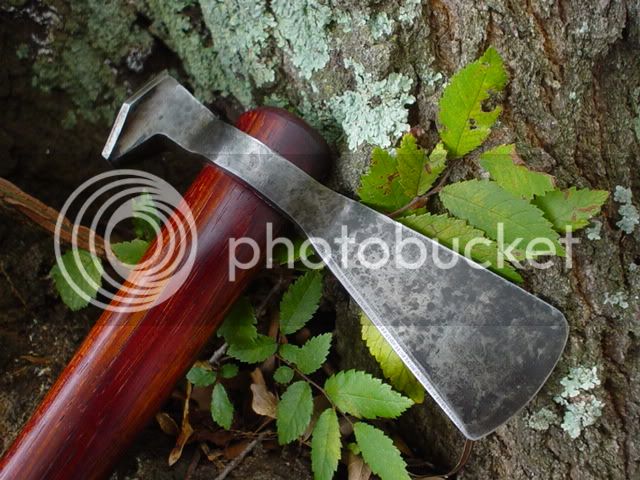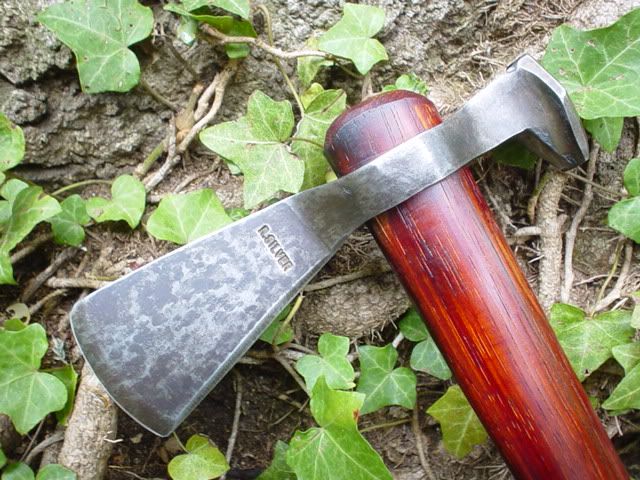I have seen this done using a common cold roll chisel purchased from a hardware store, held with the blade upright in a vise. The spike is heated to orange white hot, when it is very soft and maleable, and then it is positioned over the chisel and given a firm strke with a large machinists hammer. After a couple of strike, the spike is rocked back and forth to get it off the chisel, and then it is turned over, often after revisiting the forge to bring it back up to heat, and the chisel is driven through the other side to make a complete hole through the spike. Once the hole is begun, then it is widened with a specially shaped " Drift" that imitates the oblong shape of the handle that will be inserted. Again, depending on time, and general air temperature, the spike may be returned to the forge to be reheated a couple of time during the process. I have also seen this done using a cutoff Hoagy for an anvil, which is a chisel shaped blade made with a shank sized to fit a square hole at the back end of the anvil. You can buy them from Centaur Forge, co., in Wisconsin. The only downside to using a hoagy for this purpose is that it is not clamped into the anvil in anyway, and you really do have to smack the side of the spike to rock it off the hoagy to get it off. With a chisel held firmly in a vise, the chisel stays put, and its easier to separate the two items.
The whole purpose of a forge is to allow you to shape metal quickly. You will be amazed the first time you see a trained black smith shape metal quickly using an forge, anvil, or shaping block.
 [url] http://i85.photobucket.com/albums/k45/rsilver4/DSC03212.jpg[/img][/url]
[url] http://i85.photobucket.com/albums/k45/rsilver4/DSC03212.jpg[/img][/url]























